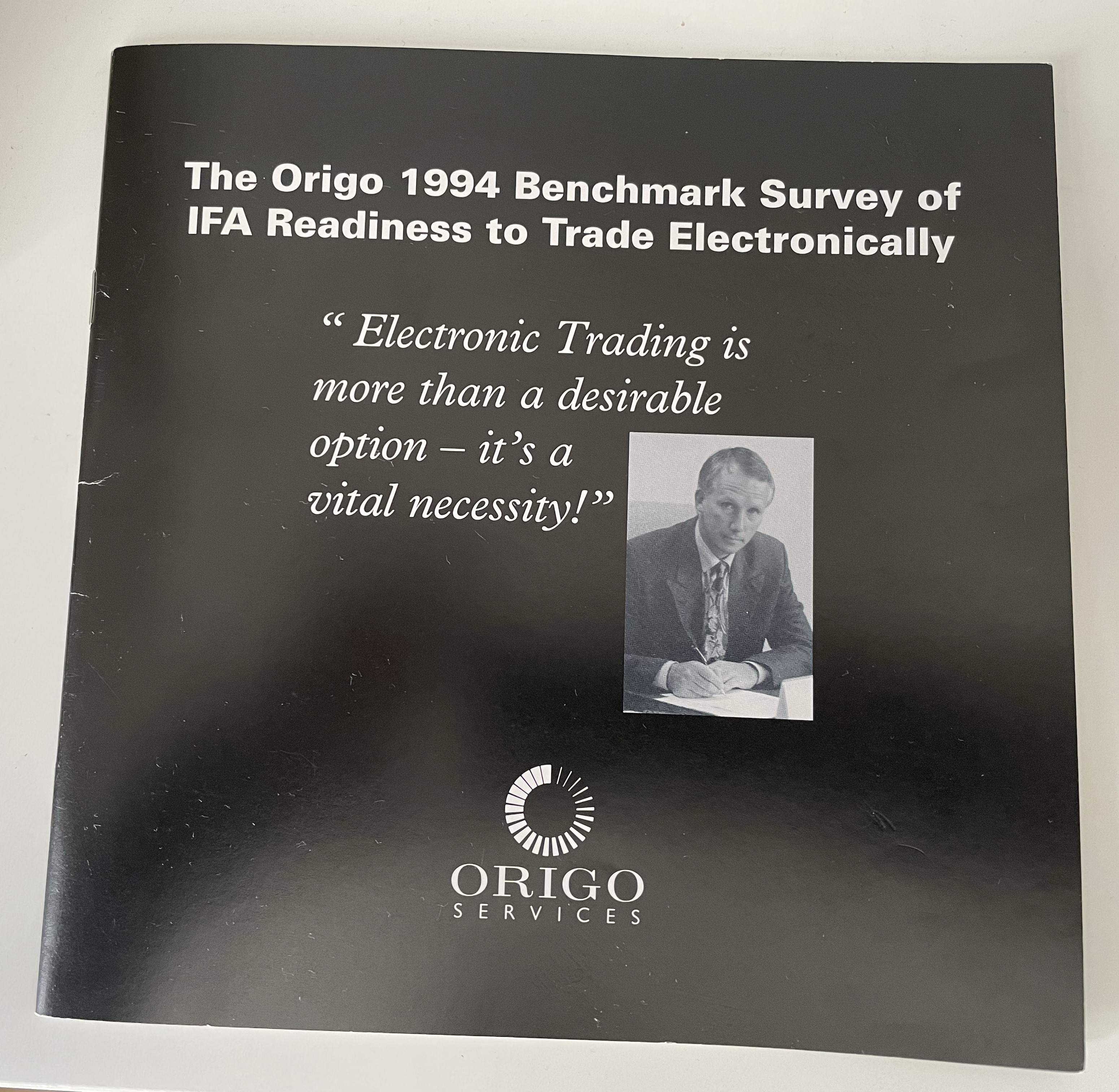In 1994, the channel tunnel was officially opened, revolutionising transportation, and enabling easy and convenient travel between the UK and its continental neighbours. 30 years ago, the first Standard, Commission EDI, was also launched, and much like the channel tunnel bridging the physical gap between the UK and Europe, our Standards ensure the seamless transportation of data and communication between organisations.
Commission was a key source of income for advisers, paid every month for a multitude of client policies of different product types. As well as commission being made up of larger initial amounts, it also involved huge volumes of very small amounts of trail commission.
During this time, communication was largely done via landline phones, fax machines and snail mail, with social media and smartphones not in existence and emails just beginning to gain traction. The internet was in its infancy and not well enough established for business-to-business communication. Therefore, one of the methods used was to exchange data using third-party value-added networks (VANs) and defined sets of transactions. Looking back at our (then Origo) archives, an Independent Financial Adviser (IFA) readiness to trade electronically benchmark survey (1994), indicated that only 12% of organisations operated a Microsoft Windows environment, and 72% of organisations were able to communicate with outside agencies using a modem but only at an average speed of 2,400 bits per second!
This same survey also indicated that the IFA organisations involved felt that they would benefit greatly if several key processes were available electronically, including policy valuations, electronic proposals and most notably, the ability to receive and reconcile commission. To create a standardised format for a commission statement, a group of product providers, large adviser organisations and networks came together, loosely using the worldwide Electronic Data Interchange for Administration, Commerce and Transport (EDIFACT) guidelines as a basis. Soon after this collaboration, the first industry Standard was agreed and adopted by both product providers and adviser organisations alike.

Advisers were now able to automatically reconcile commission payments received into their bank account with the information contained in the electronic commission transfer message – a huge saving of time and effort. Those firms that adopted the Standard could do so secure in the knowledge that not only does the Standard meet the needs of the organisations involved through their input and collaboration, but also that information was being sent and received in a well understood and common format.
While commission was banned for many products after the Retail Distribution Review (RDR) in 2012, it still remains relevant for some products, for example, life protection. Post-RDR models for ‘Adviser Remuneration’ emerged for investment and pension products and the industry again came together to agree Standards to support these new models.
Like the channel tunnel, the Commission EDI Standard created efficiency and reliability for the industry. The Standard also marked the first of many collaborations – Criterion manage 80 Standards on behalf of the industry - that would soon take place to provide industry-agreed Standards, and while technology has moved on a considerable amount in the last 30 years, the principles of industry collaboration have, and will remain, the same.
Quite simply, collaboration is key to an organisation’s success. It fosters innovation, ideas, and expertise across the field, and can save significant costs. As the industry grows and develops, collaboration will continue to play a major role in its success.
Billy Burnside, Managing Director, commenting:
It is remarkable what was achieved 30 years ago with the development of the Commission EDI Standard, especially when you consider that internet-based communication – which we take for granted today - was in its infancy and adviser-technology just starting to emerge in the market. That early commitment set the tone for the next 30 years; where Standards have continued to be developed, with the backdrop of constantly evolving technology, changing regulation and product innovation. The one constant has been the level of collaboration shown by all involved and this continues to be the cornerstone of how the industry drives innovation to deliver greater efficiencies for providers, advisers and their clients.



